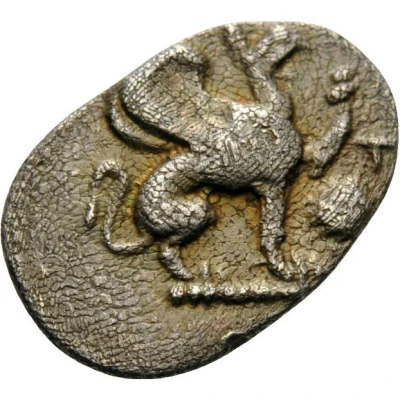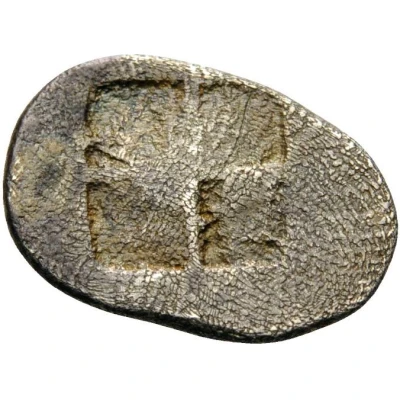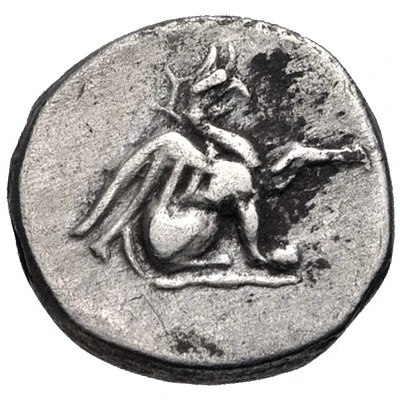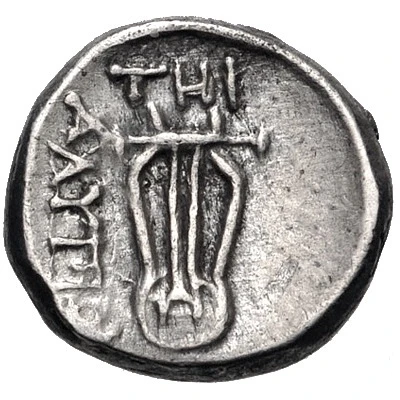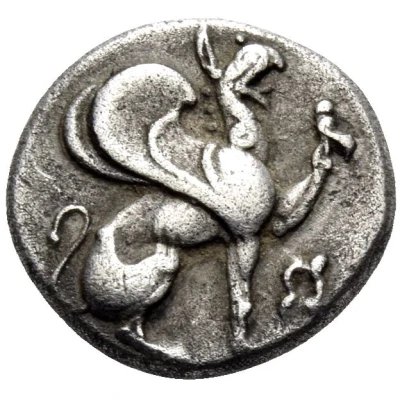
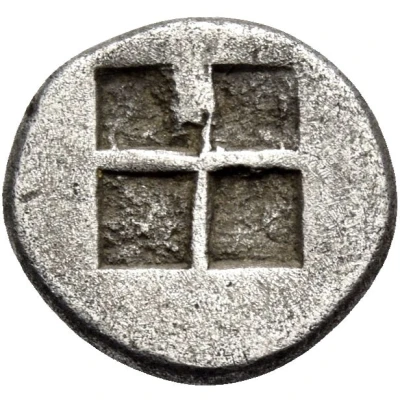

© Nomos AG
Trihemiobol 460 BC - 420 BC
| Silver | 1.37 g | 11 mm |
| Issuer | Teos (Ionia) |
|---|---|
| Type | Standard circulation coin |
| Years | 460 BC - 420 BC |
| Value | Trihemiobol (¼) |
| Currency | Drachm |
| Composition | Silver |
| Weight | 1.37 g |
| Diameter | 11 mm |
| Shape | Round (irregular) |
| Technique | Hammered, Incuse |
| Demonetized | Yes |
| Updated | 2024-10-10 |
| Numista | N#421515 |
|---|---|
| Rarity index | 100% |
Reverse
Quadripartite incuse square.
Comment
Apparently unpublished with this symbol.
Interesting fact
The Trihemiobol coin was used as a form of currency in the ancient Greek city of Teos, which was located in the region of Ionia (now modern-day Turkey). The coin's design features the image of a mythical creature called a Griffin, which was a symbol of protection and strength in ancient Greek mythology. The Griffin was often depicted as a creature with the body of a lion and the head and wings of an eagle, and it was believed to have the power to protect the city and its people from harm. The use of the Griffin image on the Trihemiobol coin suggests that the people of Teos valued strength, protection, and prosperity, and saw the coin as a symbol of their city's wealth and power.
